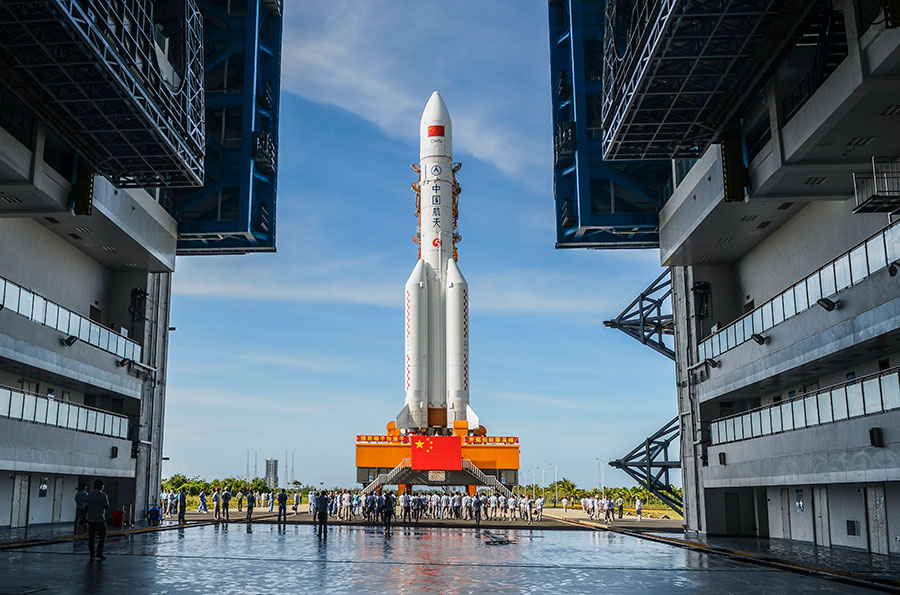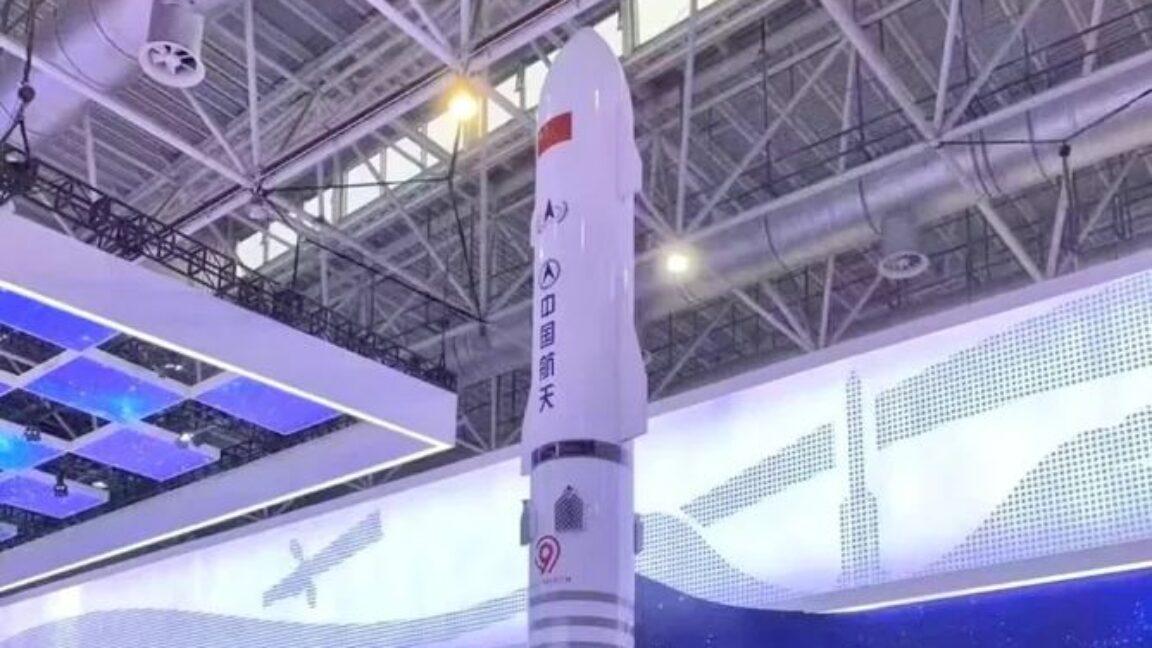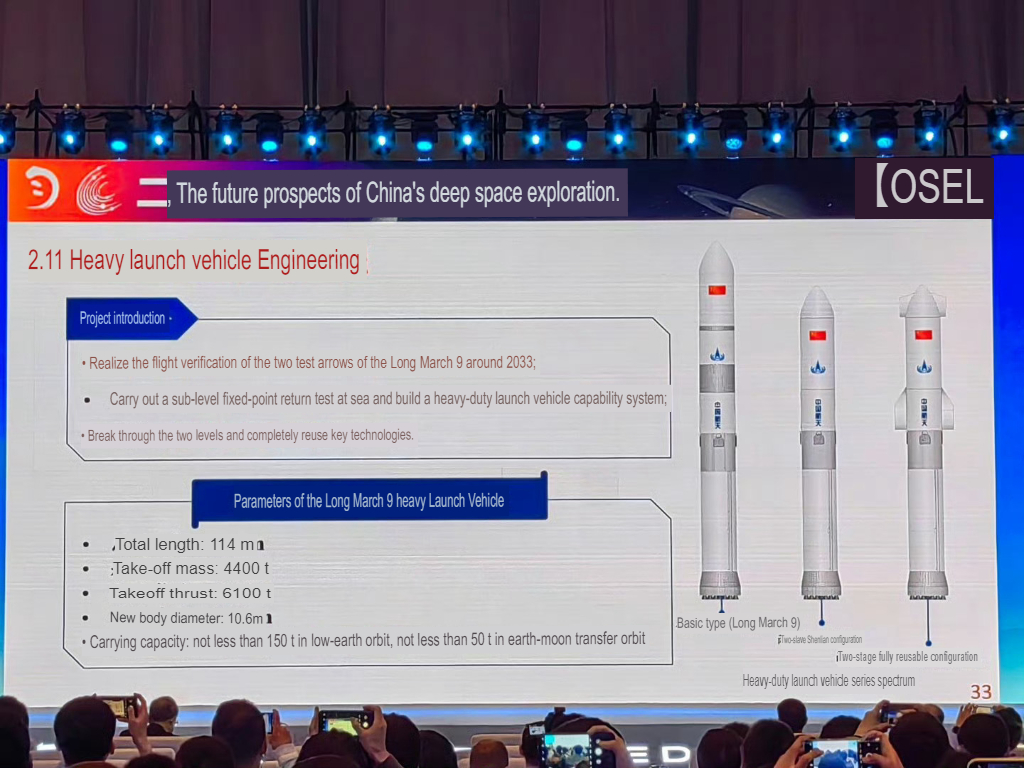China reveals a new heavy lift rocket that is a clone of SpaceX’s Starship
The Long March 9 gets flaps and a reusable upper stage.
When Chinese space officials unveiled the design for the country's first super heavy lift rocket nearly a decade ago, it looked like a fairly conventional booster. The rocket was fully expendable, with three stages and solid motors strapped onto its sides.
Since then, the Asian country has been revising the design of this rocket, named Long March 9, in response to the development of reusable rockets by SpaceX. As of two years ago, China had recalibrated the design to have a reusable first stage.
Now, based on information released at a major airshow in Zhuhai, China, the design has morphed again. And this time, the plan for the Long March 9 rocket looks almost exactly like a clone of SpaceX's Starship rocket.
This looks familiar
Based on its latest specifications, the Long March 9 rocket will have a fully reusable first stage powered by 30 YF-215 engines, which are full-flow staged combustion engines fueled by methane and liquid oxygen, each with a thrust of approximately 200 tons. By way of comparison, Starship's first stage is powered by 33 Raptor engines, also fueled with methane and liquid oxygen, each with a thrust of about 280 tons.
The new specifications also include a fully reusable configuration of the rocket, with an upper stage that looks eerily similar to Starship's second stage, complete with flaps in a similar location. According to a presentation at the airshow, China intends to fly this vehicle for the first time in 2033, nearly a decade from now.
In related news, last week, a quasi-private Chinese space startup, Cosmoleap, announced plans to develop a fully reusable "Leap" rocket within the next few years. An animated video that accompanied the funding announcement indicated that the company seeks to emulate the tower catch-with-chopsticks methodology that SpaceX successfully employed during Starship's fifth flight test last month.
Let's be real for a minute. These are not the first times Chinese rocket programs have emulated SpaceX, such as when Space Pioneer planned to develop a Falcon 9 clone. Both the state-run rocket agency and the company's private industries are copying the best practices of SpaceX as they seek to catch up. At this point, China's launch industry is basically hanging out in the SpaceX waiting room to see which ideas it should swipe next.
The real race begins to unfold
It is, of course, not new that the Chinese industry seeks to copy—and in some cases, steal—ideas from Western competitors. To its credit, the Chinese space industry recognizes that the future of spaceflight is fully reusable, and even its state enterprises are re-calibrating toward such an outcome.
By contrast, US policymakers seem determined to force NASA to continue building the ultra-expensive and expendable Space Launch System rocket for decades. This consumes a NASA budget that could otherwise be directed toward the kind of technological advances that might keep the US civil space program ahead of China.
NASA and Chinese space agencies are presently locked into a second space race, with both countries building international coalitions to explore the South Pole region of the Moon and eventually establish settlements there. Because the real estate near the South Pole (especially close to craters, where there is likely to be water ice) is relatively limited, winning this race really matters for long-term space ambitions.
China intends to use a more conventional rocket for its initial lunar missions, the Long March 10 vehicle. These initial forays will only last for a few days. The country is counting on the much more powerful, and reusable, Long March 9 to support more robust lunar operations.
If the ultimate aim is to develop lunar settlements, therefore, the real winner is not the country or space agency that puts astronauts on the surface first. It's the first country that develops a fully reusable super heavy lift rocket and funds a program that takes advantage of this revolutionary capability. The United States presently has a lead in this race given that Starship is flying.
But the race is not yet won by any means, and the latest design of Long March 9 indicates that China knows where the finish line lies.









No comments:
Post a Comment